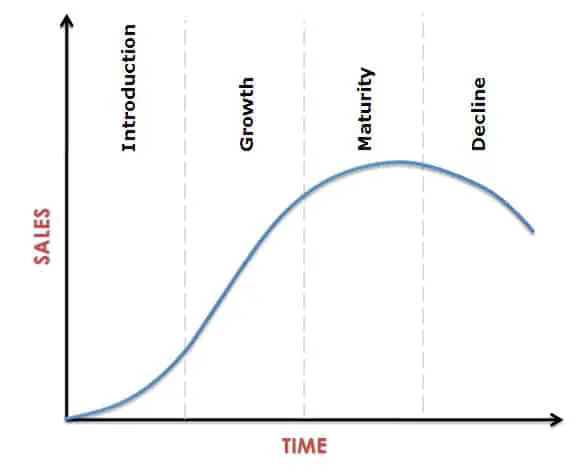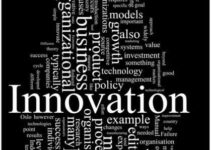Product Life Cycle (PLC)
A product is delivered to go through definite life stages, in the same manner as living organisms do. They are first introduced in the market and customers accept the product if they find it serving their needs. Sales grow rapidly. Finally everyone who need the product acquires it and sales plateau. At some stage, either the need that the product was satisfying ceases to exit, or a different solution to the need emerges. Customer stop buying the product and eventually the product ceases to exist.
Stages of Product Life Cycle
1. Introduction: This is a first stage of product life cycle. Company builds sales by expanding the market for the product. It create product awareness so that customer becomes aware of the generic product benefits. Customers are suspicious of the product benefits and are not sure if it will serve their needs.
Heavy expenditure on advertising and personal selling is essential. At this stage the product fairly basic with emphasis on reliability and functionality, rather than having special features to appeal to different customer groups. Promotion should stimulate trial both advertisement and sales promotion scheme.
Price can be high as the company would be keen to recover the heavy development cost that the company incurs. The company can afford to charge high prices as there is none or very little competition. But low prices are helpful at this stage as customer consider buying a low priced product less risky when they are not sure of its benefits.
Distributor can be patchy as some dealers will be wary of stocking the new products as they may not be sure of its acceptability by customers but it is very important to ensure adequate distribution of product. Company’s promotional programs built up awareness, curiosity, and desire for the product but when customer do not find the products on shelves they tune of the product from their minds from very long time, before the company starts its promotional blitz, it should ensure that the products are available on the shelves.
They may have to provide extra benefits to wholesalers and retailers to stock the new product. Most new product fails due to the lack of their availability rather than due to the customers not wanting to buy the product.
2. Growth: Customers are aware of the product at this stage and are convinced that it serve their needs. Customer understands the generic benefits of the product and the company now builds sales and market share by building brand preference. The product is redesigned to create the differentiation, and promotion lays stress on the benefits of the differentiated product. Focus is on ensuring repeat purchases.
The company tries to achieve this purpose by focusing its efforts on building a strong brand. A strong build at this stage helps the company to fight competition as the emerging in hordes at this stage. There is pressure on prices due to entry of large number of competitors.
At this stage different segment starts emerging, and the company has to make a decision as to which of the segment it will attempt to serve. Some pioneers try to serve the whole market with one or a few standard products even when segment have clearly emerged. This is a mistake. Focused competitors will emerge, which will target specific segment and take away market share from each of the segments.
Most pioneers lose their first mover advantage by their attempt to indiscriminately serve the entire segment as they did in the introduction stage. The pioneer should select a few lucrative segments and target those segments with separate offerings for each of them.
3. Maturity: The market does not grow at this stage. The company should hold on to the profit and market share rather than park on costly competitive challenges. Since the company can gain sales only at the expense of competition, strong challenges are resisted by competitors and can lead to costly promotional price wars. A brand objective now focuses on maintaining brand loyalty and stimulating the repeat purchases. For all but the brand leader, competition may erode prices and profit margins.
At this stage companies are tempted to engage in costly promotional prices wars to wean away market share from competitors, but such victories are ephemeral. Most companies are not able to effects permanent shifts in market share with promotional pricing. Therefore instead of trying to match promotional pricing scheme of competitors, the company should focus on strengthening its brand by differentiating its offering.
4. Decline: A company should anticipate the impending decline in sales. The biggest hurdle in adoption of suitable strategies for the decline stages is marketer’s false belief that there is no decline or at least that will not come so soon.
The company should analyze changing customer requirements and effectiveness and acceptability of emerging substitute solution to gauge the speed at which its product will become redundant. Sometimes the customer requirement may have changed dramatically or the emerging solution may be very effective, so the company will have to make plans to exit the market immediately.
At other times the customer requirement may be changing gradually and the emerging solution may have bugs and may be slow to be accepted, therefore the company can plan a more gradual withdrawal.


